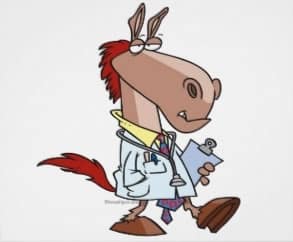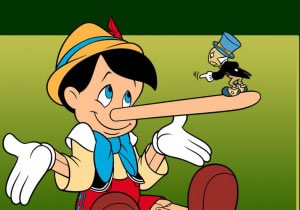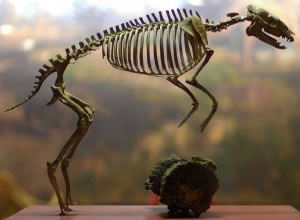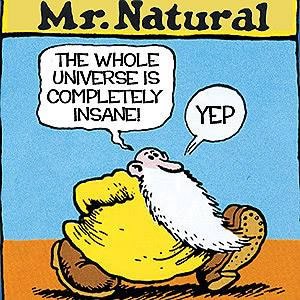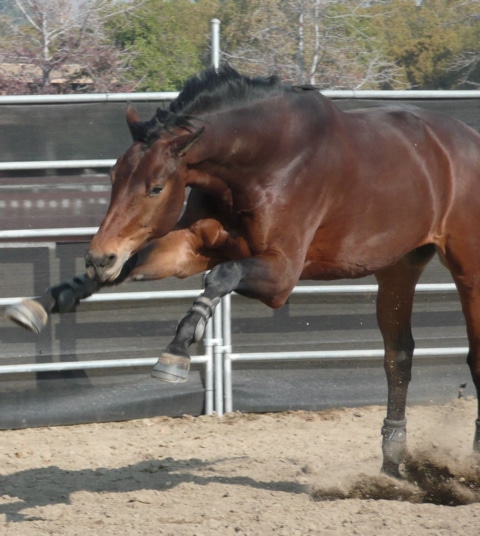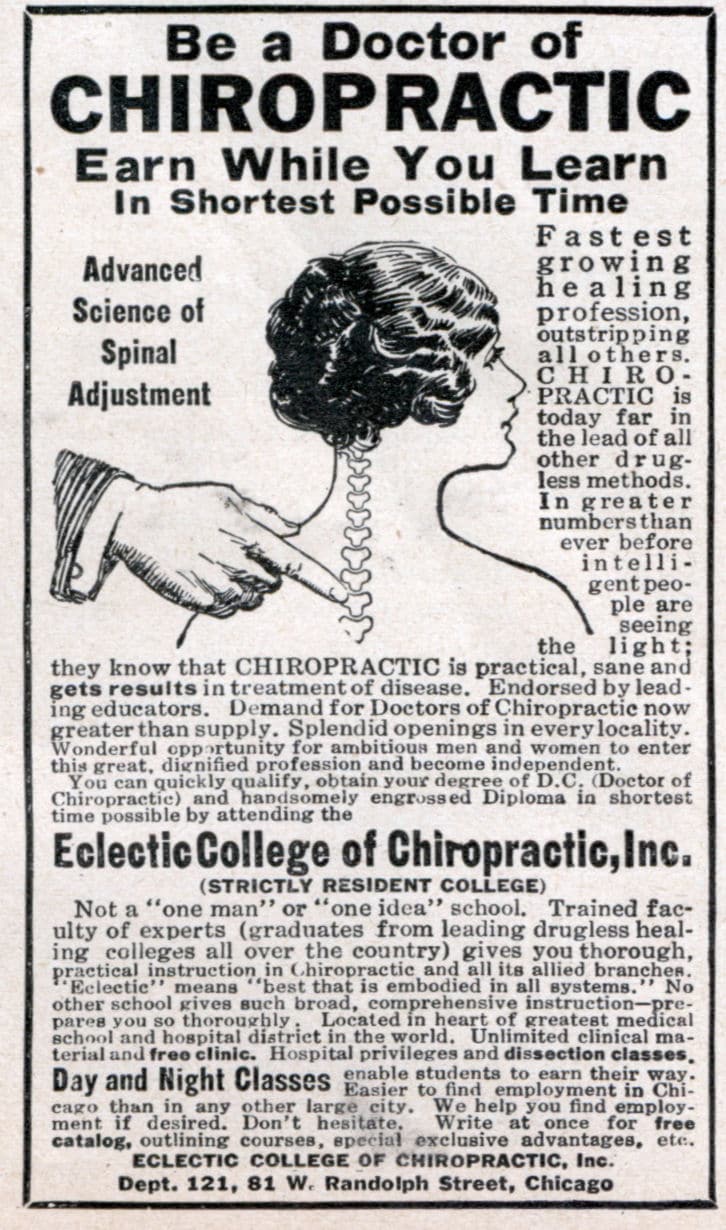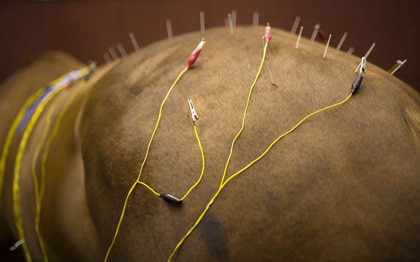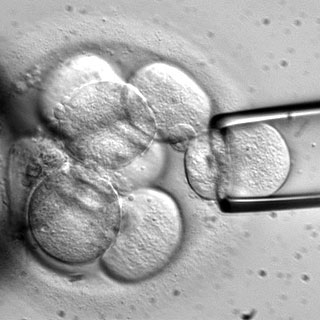There’s something that you need to be aware of in the horse world. It’s called “false precision.”
Precision (true precision) requires that a specific action produces pre-defined and specific results. The basic premise behind precision is that everything happens for a reason, and that the list of reasons is small enough to manage with a precise action.
Precision is a wonderful thing. So, for example, if you have a horse biscuit company, and you want to produce more horse biscuits, you may have to buy another horse biscuit machine. You can precisely say that your new biscuit machine produces X biscuits per hour, and a price of Y per biscuit, and you can come up with a some sort of idea about how you’re going to pay off your investment. This kind of precision is REALLY important when you’re in business. Airplane parts need to be precise, or the plane won’t fly. Precision is rarely easy, but it can be achieved when the relationship between the action that you take and the result that you get are simple and clear cut.
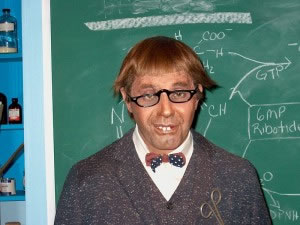 False precision is another thing entirely. It happens when exact numbers are used for inexact notions. When it comes to precise causes and effects in the horse world, maybe someone has person has done “research;” maybe they’ve even done some some math. Exact numbers and amounts create the impression that person giving the numbers is very knowledgeable.
False precision is another thing entirely. It happens when exact numbers are used for inexact notions. When it comes to precise causes and effects in the horse world, maybe someone has person has done “research;” maybe they’ve even done some some math. Exact numbers and amounts create the impression that person giving the numbers is very knowledgeable.
People are impressed by numbers. They generally like things to be exact. So, often, the more precise you can [pretend to] be, the better the information appears. In a variety of areas, people may use false precision to promote an idea (or themselves).
Precision is usually the enemy of biological systems (including horses). If the requirements for biological systems get too precise, it’s hard for the system to survive, or to adapt to changing conditions. So, for example, at the bottom of the ocean are hydrothermal vents. They are cracks in the earth’s crust, and the water around them is really hot. There’s a special type of bacteria (chemosynthetic bacteria) that live there – AND ONLY THERE. If the water’s too cold – they can’t live. If they’re in too much light – they can’t live. They have requirements that are very precise. And because they are so precise, they live in only one spot on the planet, at the depths of the oceans (not to suggest that living on the bottom of the ocean isn’t wonderful in it’s own way, of course, but not everyone can live there).
On the other hand, biological systems that aren’t as precise tend to do very well. Take the horse (I mean, that’s what we’re here for, right?). Horses don’t have requirements that are THAT precise. In nature….
IMPORTANT ASIDE: I generally don’t think much of the “in nature” argument, that is, the idea that “natural” is a synonym for “good.” But, in this case, I’m using the term to define a specific circumstance for horses.
… horses get along on two things: grass and water. That’s it. That’s all they need. And, as a result of their imprecise requirements various equine species have lived in places all over the world, for millions of years: eohippus, protohippus, zebras in Africa, Przewalski horses in Mongolia, onagers, asses, Equus Occidentalis in the LaBrea Tar Pits, wild horses in Nevada, and on and on and on.
IMPORTANT ASIDE NUMBER TWO: Why is is that the folks that embrace “natural” are also the ones that seem intent on giving their horses the most stuff? It seems to me that embracing natural would make one the enemy of stuff that comes in buckets and bags and shrink-wrapped containers. But that’s just me.
The problem is, that when it comes to working on a big, imprecise system like a horse, things that smack of tremendous precision are often a sign that the person giving the numbers has a pretty optimistic view of his or her expertise. False precision leads people into supposing that the knowledge base is more detailed than it really is. And it may lead other people (READ: horse owners) to nervously worry that without and exact amount of this or that, a horse could be in trouble. Let’s pick some examples.
Say your horse has been identified as having some sharp points on his teeth. Whether it’s needed or not (another subject – you can CLICK HERE if you want to read more about horse teeth), you want to smooth off those sharp points. And you engage someone to do it (for the sake of brevity, we’ll not engage in the, “Who is supposed to float your horse’s teeth debate in this article). If the person that you retain tells you that it’s important that your horse have an “occlusal equilibration,” if he or she says that the occlusal angles of the upper and lower teeth have to be at a certain specific angle, if that person tells you that the horse’s mouth has to be precisely “balanced” by removing a few millimeters of tooth here or there, or that they need to be meddled with every six months, that person is being awfully precise.
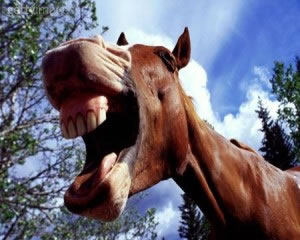 And that precision should be a warning sign. You have to figure if a few points in the horse’s mouth (or a little wave, or a bit of a “step”) were the difference between life and death for a horse, they simply wouldn’t have made it this long (and, based on my work with horses at the LaBrea Tar Pits, I can assure you that horses had points long before people started riding them). It makes no sense at all that a horse would want to have tremendous precision in its mouth. Given that, I think it’s more likely than not that much of the precision that horses are said-by-some to need in their mouth is simply unnecessary – in fact, there’s almost no scientific support for most of what’s done to the horse’s mouth in the name of precision.
And that precision should be a warning sign. You have to figure if a few points in the horse’s mouth (or a little wave, or a bit of a “step”) were the difference between life and death for a horse, they simply wouldn’t have made it this long (and, based on my work with horses at the LaBrea Tar Pits, I can assure you that horses had points long before people started riding them). It makes no sense at all that a horse would want to have tremendous precision in its mouth. Given that, I think it’s more likely than not that much of the precision that horses are said-by-some to need in their mouth is simply unnecessary – in fact, there’s almost no scientific support for most of what’s done to the horse’s mouth in the name of precision.
Say you think that your horse has a back problem. For better or worse, you decide that you want someone to “adjust” him (CLICK HERE to read some thoughts about that). And, as noted in an blurb from the “Options for for Animals” website, in order to treat such the problem, the person treating “… applies a precise thrust on the immobile anatomical structures.”
Precise? Think about it. Someone is up over a horse’s back, he or she pushes down, and what happens? Turns out, we know what happens, and it certainly isn’t precise. In 2001, a prolific and well-respected investigator at the University of Calgary, Canada named Walter Herzog studied the idea of “precise” thrusts on humans. As you push harder on the back, you make more contact with the back – think of pushing into a mattress – and the total force applied just spreads out. It goes to non-target-specific tissues (CLICK HERE to see the study). In fact, when it comes to pushing on backs, it turns out you can’t be very precise at all. And that’s in humans – horses have LOTS more muscle, and the spine is much more thickly covered. So, to the extent that “adjusting” may have some effect on horses – and, in horses, there’s no real scientific support for the contention that it does – it’s almost undoubtedly NOT because of any precise thrusting. The precision that is said to be necessary is almost undoubtedly false, and, as such, it casts a bit of doubt on the whole thing.
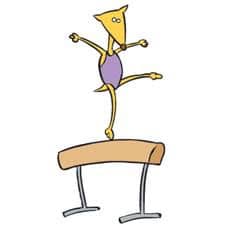 How about hoof balance? People that shoe and trim horse feet may claim that precise balance is absolutely critical to the health of the horse. But when you think about it, that doesn’t make a whole lot of sense, either. Just like with the teeth, from the standpoint of biological success, it wouldn’t do a horse any good if a few millimeters of hoof here or there made the difference in him being able to move or not. I’m not trying to tell you that good shoeing and trimming isn’t important – because it certainly is – but there’s a ton of debate about the “best” way to shoe horses, much less the “precision” needed (honestly, when one thinks of precision engineering, a rasp, a knife, and set of hoof nippers are not the tools that come to mind). About the only thing that you can be certain of is that no matter who is telling you how to trim or shoe your horse, the way that he or she does things is best. And, just like the other examples, it’s also likely that much of the “precision” that is said by some to be so critical, is really just another example of false precision.
How about hoof balance? People that shoe and trim horse feet may claim that precise balance is absolutely critical to the health of the horse. But when you think about it, that doesn’t make a whole lot of sense, either. Just like with the teeth, from the standpoint of biological success, it wouldn’t do a horse any good if a few millimeters of hoof here or there made the difference in him being able to move or not. I’m not trying to tell you that good shoeing and trimming isn’t important – because it certainly is – but there’s a ton of debate about the “best” way to shoe horses, much less the “precision” needed (honestly, when one thinks of precision engineering, a rasp, a knife, and set of hoof nippers are not the tools that come to mind). About the only thing that you can be certain of is that no matter who is telling you how to trim or shoe your horse, the way that he or she does things is best. And, just like the other examples, it’s also likely that much of the “precision” that is said by some to be so critical, is really just another example of false precision.
One last example – nutrition. You can drive yourself nuts trying to give your horse a cup of this, two measures of that, and a scoop of the other. In fact, in an effort to “help” you with that madness, there’s even at least one company that’s made a great business out of prepackaging all of it. That’s all fine, but… back to the horse in nature… horses have thrived as a species just fine as long as their needs for calories and water is met. That’s the way that things were intended. Thus, much of the “‘precision” about how to feed a horse is really just false precision.
NOTE: I could give lots more examples, but it’s time to bring this to a close…
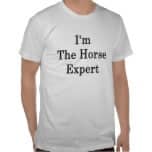 Look, I don’t want anyone to take any of this the wrong way. For example, I’m not saying that all nutritional advice is bad, or that horses never need to have their mouths looked at, or that it doesn’t matter how your horse is shod. What I am saying is that I think that there’s been a tremendous loss of common sense in the horse world, and I think that it’s making some horse owners crazy. I think that false precision is one of the things that’s making the whole process of owning a horse more expensive and anxiety-ridden than it needs to be. False precision makes people think that without the valiant assistance of a variety of “necessary experts” holding onto their horses, their well-being is on the edge of an unhealthy cliff, ready to pitch over. False precision may even be making some people – who think it’s not worth the trouble – less inclined to own horses. And, insofar as horses go, I think that’s a very bad thing, because as their “natural” world gets increasingly smaller, horses need people as much as people once needed them.
Look, I don’t want anyone to take any of this the wrong way. For example, I’m not saying that all nutritional advice is bad, or that horses never need to have their mouths looked at, or that it doesn’t matter how your horse is shod. What I am saying is that I think that there’s been a tremendous loss of common sense in the horse world, and I think that it’s making some horse owners crazy. I think that false precision is one of the things that’s making the whole process of owning a horse more expensive and anxiety-ridden than it needs to be. False precision makes people think that without the valiant assistance of a variety of “necessary experts” holding onto their horses, their well-being is on the edge of an unhealthy cliff, ready to pitch over. False precision may even be making some people – who think it’s not worth the trouble – less inclined to own horses. And, insofar as horses go, I think that’s a very bad thing, because as their “natural” world gets increasingly smaller, horses need people as much as people once needed them.
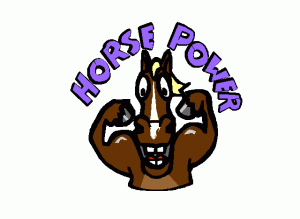 Be on the lookout for false precision. When people say things that, on closer examination, don’t make much sense in light of how horses are, and have always been, it’s should be a bit of a warning light to you. The basic needs of biological systems that have been successful – like the horse – aren’t that precise. Beware of information that says otherwise.
Be on the lookout for false precision. When people say things that, on closer examination, don’t make much sense in light of how horses are, and have always been, it’s should be a bit of a warning light to you. The basic needs of biological systems that have been successful – like the horse – aren’t that precise. Beware of information that says otherwise.

